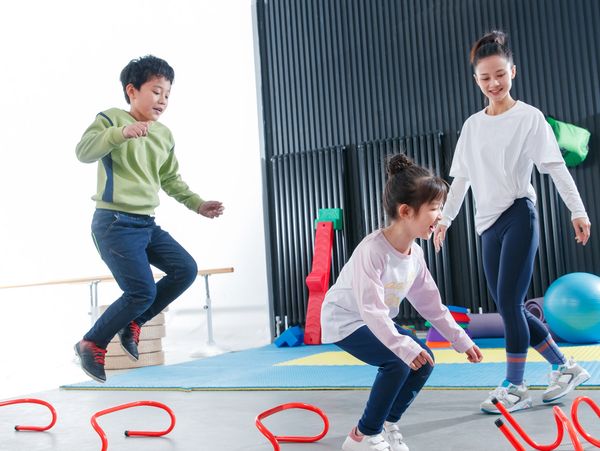Pediatric Occupational Therapy: Where Wonder Leads and Learning Follows
Gross Motor

Introduction to Gross Motor Development
Watching a child take their first steps, climb their first playground ladder, or master riding a bicycle brings joy that fills our hearts. These moments aren't just milestones to check off a list, they're celebrations of your child's growing strength, coordination, and confidence in their body.
Gross motor skills involve the large muscle groups that help children move through their world: rolling, sitting, crawling, walking, running, jumping, and playing. These foundational movements support everything from daily activities to academic learning, as children who feel confident in their bodies often feel confident in their abilities to explore and learn.
These flip cards are designed to help you celebrate your child's unique gross motor journey with knowledge and wonder. Rather than creating pressure around timelines, I hope they offer you insight into the beautiful progression of physical development and remind you that every child grows at their own perfect pace. Each milestone represents an incredible achievement in brain-body coordination that deserves recognition and joy.
Remember, these ranges reflect what many children explore during these periods, but your child may reach milestones earlier or later, and both are completely wonderful. Trust your child's individual timeline while staying connected to their development with curiosity and celebration.
Gross Motor Developmental Milestones
Gross Motor Development - Research Citations
Supporting Evidence for Gross Motor Development Flip Cards
Research Foundation
These developmental ranges are grounded in current research from leading developmental scientists and organizations worldwide. The references below represent studies spanning multiple cultures and populations, ensuring the milestones reflect the beautiful diversity of child development while maintaining scientific accuracy.
Primary Research on Gross Motor Development
WHO Multicentre Growth Reference Study Group. (2006). Assessment of gross motor development in the WHO Multicentre Growth Reference Study. Food and Nutrition Bulletin, 27(4), S104-S119.
- Key Finding: Walking occurs between 9.2-17.6 months across cultures, establishing international reference standards
Choi, B., et al. (2024). Changes in motor competence of 4-8-year-old children: A longitudinal study. Journal of Motor Learning and Development, 12(1), 87-104.
- Key Finding: Motor competence development trajectories and individual variation patterns
Meta-analysis of motor milestone associations. (2024). Systematic review of 21,205 individuals showing motor development patterns. PubMed, 39067834.
- Key Finding: Large-scale analysis revealing specific motor development patterns across populations
Movement and Physical Activity Research
Malina, R. M., et al. (2004). Growth, maturation, and physical activity. Human Kinetics.
- Key Finding: Comprehensive research on physical development and activity patterns across childhood
Gallahue, D. L., & Ozmun, J. C. (2011). Understanding motor development: Infants, children, adolescents, adults. McGraw-Hill.
- Key Finding: Developmental sequence of fundamental movement skills
Age-Specific Research
Birth-6 Months
- Hadders-Algra, M. (2018). Early human motor development: From variation to the ability to vary and adapt. Neuroscience & Biobehavioral Reviews, 90, 411-427.
- Key Finding: Early motor variability is healthy and supports later skill development
6-18 Months
- Adolph, K. E., & Robinson, S. R. (2015). Motor development in infancy. Handbook of child psychology and developmental science, 1-45.
- Key Finding: Motor development occurs through dynamic interaction with environment
Toddlers and Preschoolers
- Clark, J. E., & Metcalfe, J. S. (2002). The mountain of motor development: A metaphor. Motor development: Research and reviews, 2, 163-190.
- Key Finding: Motor development is non-linear with periods of rapid change and plateaus
School Age
- Lubans, D. R., et al. (2010). Fundamental movement skills in children and adolescents. Sports Medicine, 40(12), 1019-1035.
- Key Finding: Fundamental movement skills are building blocks for lifelong physical activity
Sports and Physical Activity Development
Robinson, L. E., et al. (2015). The association between perceived physical competence and fundamental motor skills in preschool children. Child: Care, Health and Development, 41(4), 589-596.
- Key Finding: Self-perception of physical competence relates to actual motor skill development
Stodden, D., et al. (2008). A developmental perspective on the role of motor skill competence in physical activity: An emergent relationship. Quest, 60(2), 290-306.
- Key Finding: Motor competence in childhood predicts physical activity levels in adolescence